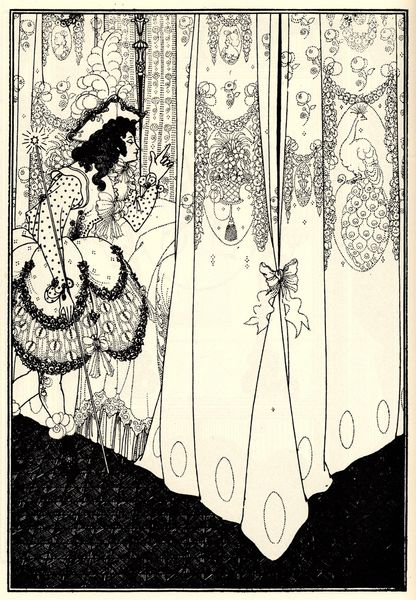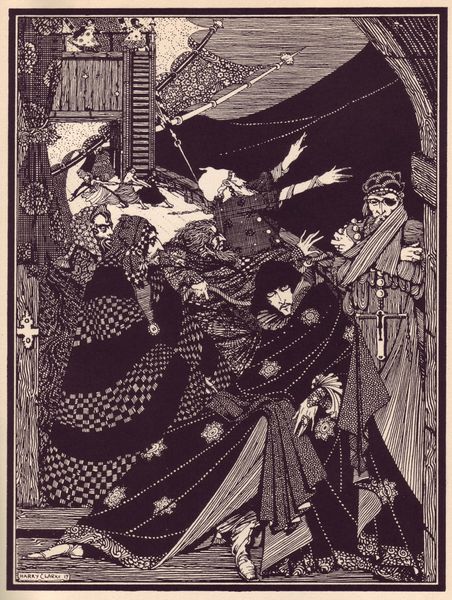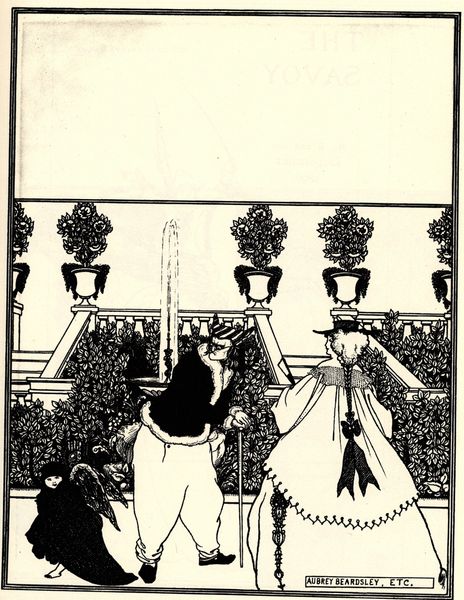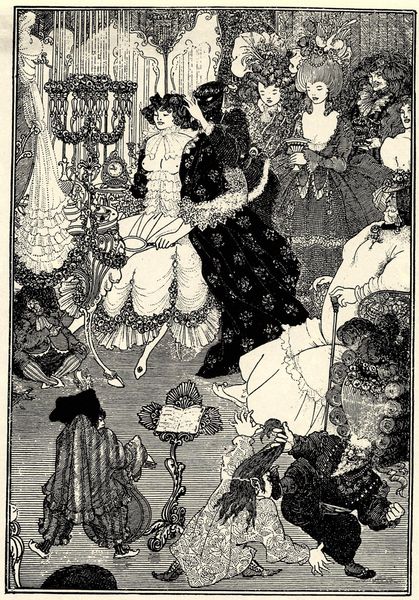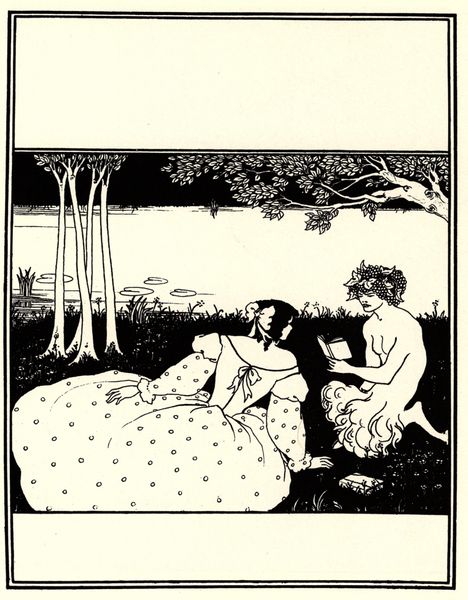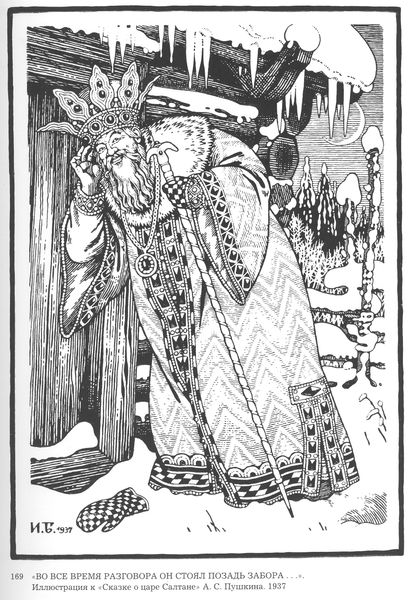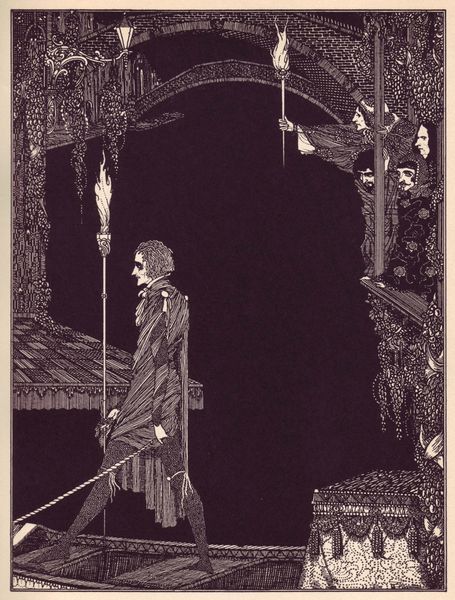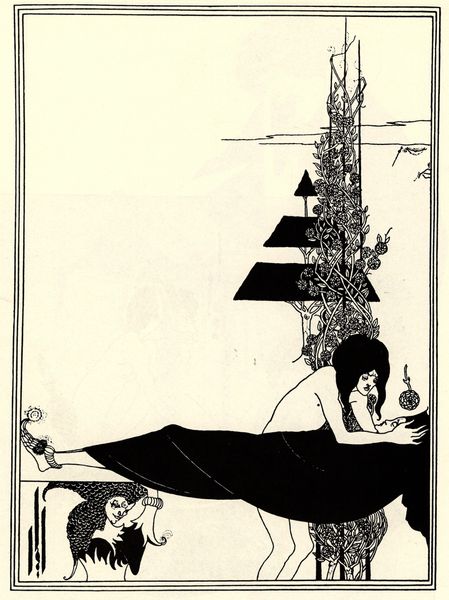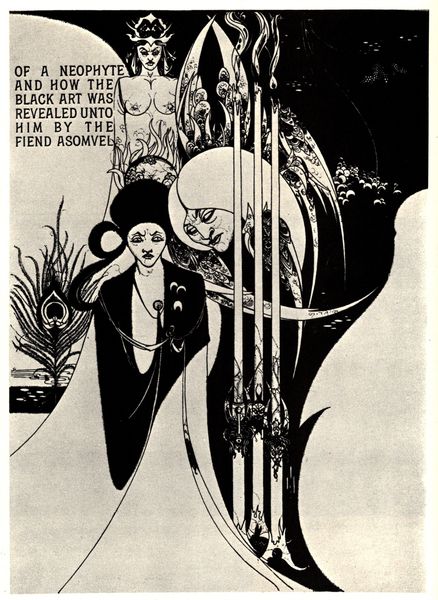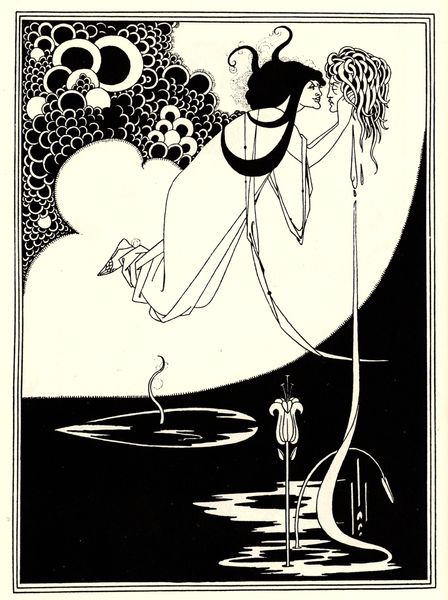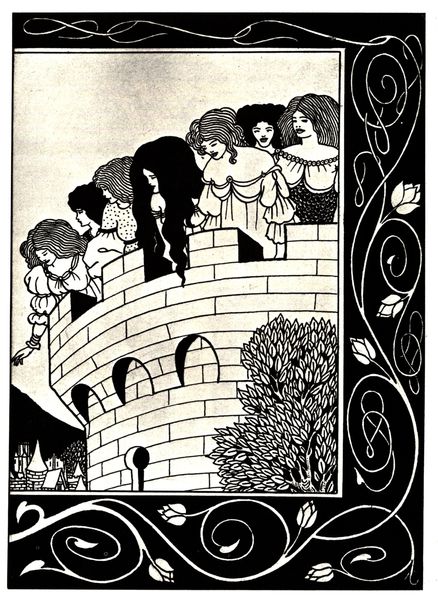
drawing, ink, pen
#
drawing
#
art-nouveau
#
narrative-art
#
landscape
#
figuration
#
ink
#
symbolism
#
pen
#
comic art
#
graphic novel art
Copyright: Public domain
Editor: Here we have Aubrey Beardsley's 1894 pen and ink drawing, "How Morgan Le Fay Gave a Shield to Sir Tristram." I’m struck by the stark black and white contrast and the overall decorative style; it feels so purposeful and crafted. How do you read this piece? Curator: Well, considering it as a material object rooted in its time, what interests me are the very specific processes that created it, the readily available materials: ink, paper, pen. Notice the labor invested, the *mass* production potential implied by printmaking; this wasn't a unique, singular object meant only for a wealthy patron's gaze. Think about its consumption – part of a book, accessible to a wider reading public. Beardsley blurred lines between high art and illustration, questioning those traditional boundaries. Editor: So, you see the printmaking aspect as essential to understanding the artwork’s social impact? Curator: Precisely! We can see here the late 19th century fascination with Arthurian legends and how new technologies enabled those stories and Beardsley’s very specific vision to be circulated much more broadly. His stylistic choices, the influence of Japanese prints with those strong lines, were impacting not just art but commercial design and book illustration as well. Editor: I see your point about accessibility through print. It makes me think about how the subject matter, a knight being given a shield, becomes less about courtly romance and more about the circulation of ideas and stories to a wider audience, transforming our very idea of the 'hero.' Curator: Exactly. What we need to appreciate here is less a singular 'masterpiece' than the intersection of materials, labor, and consumption—the ways in which art like this participates in larger social and economic processes. Editor: That is so interesting; I didn't initially consider the materials themselves as a way of contextualizing it. Thank you for illuminating that perspective!
Comments
No comments
Be the first to comment and join the conversation on the ultimate creative platform.
